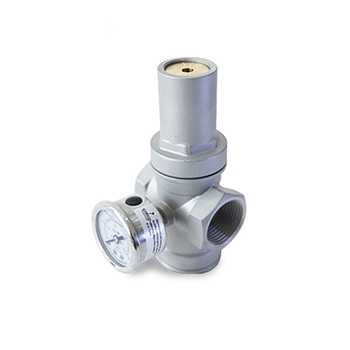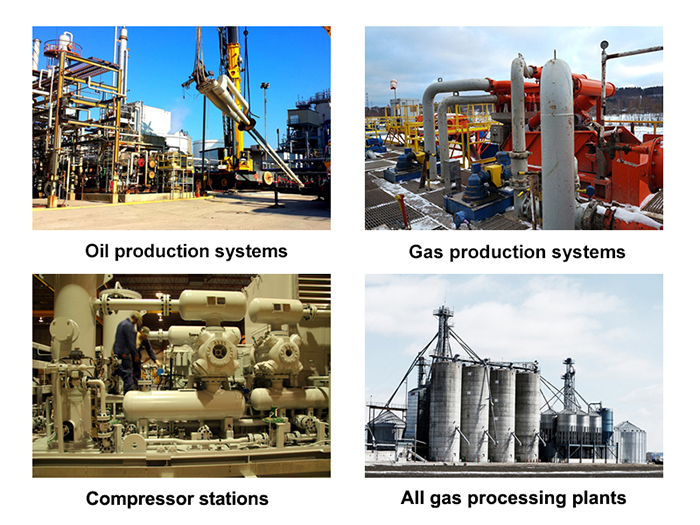How do you Adjust a Pressure Relief Valve?
The pressure relief valve is a valve that reduces the inlet pressure to a specified outlet pressure by adjusting and can automatically keep the outlet pressure stable by relying on the energy of the medium itself. In order to facilitate the use of the pressure relief valve, next we will introduce you to how to adjust the pressure of the pressure relief valve.
Pressure relief valve adjustment steps
- Close the valve downstream of the relief valve. Find the place to adjust the pressure, slowly rotate clockwise, the outlet pressure will gradually increase, and the outlet pressure will decrease when it rotates counterclockwise. After adjusting to the required pressure value, the downstream valve can be opened.
- After closing the gate valve in front of the pressure relief valve, it is necessary to open the gate valve behind the pressure relief valve to achieve the purpose of creating a downstream low-pressure environment. Turn the adjusting screw counterclockwise to the uppermost position (relative to the lowest outlet pressure), and finally close the gate valve behind the pressure relief valve, and slowly open the gate valve in front of the pressure relief valve until it is fully open.

- Slowly turn the adjusting screw clockwise to adjust the outlet pressure to the required pressure. After adjustment, lock the nut and open the gate valve behind the pressure relief valve. Due to the setting of the working principle of the pressure relief valve, if the outlet pressure is higher than the set pressure during adjustment, it must be readjusted from the first step, that is to say, it can only be adjusted from low pressure to high pressure.
- When the valve is supplied with water from the inlet end, the water flows through the needle valve into the main valve control room, and the outlet pressure acts on the pilot valve through the conduit. When the outlet pressure is higher than the set value of the pilot valve spring, the pilot valve closes. The control room stops draining, at this time the pressure in the main valve control room rises and the main valve is closed, and the outlet pressure no longer rises.
- When the outlet pressure of the valve drops to the spring setting pressure value of the pilot valve, the pilot valve opens and the control chamber drains downstream. Since the displacement of the pilot valve system is greater than the water intake of the needle valve, the pressure in the control chamber of the main valve drops, and the inlet pressure makes the main valve open. In a stable state, the water intake and drainage of the control chamber are the same, the opening of the main valve remains unchanged, and the outlet pressure is stable. The outlet pressure can be set by adjusting the pilot valve spring.
- When setting the driving pressure of the mechanical pump, the correct method is that the driving pressure is higher than the back pressure standard. This principle is suitable for most situations. But sometimes in order to achieve the required displacement of the mechanical pump, it is necessary to set the driving pressure higher. The downside of high drive pressure is that it tends to cause wear on the intake valve. If the driving pressure is higher than the required value, this practice will cause serious wear to the intake valve and the intake valve must be replaced in advance.
Pressure relief valve application
The pressure relief valve is a special device that automatically reduces the working pressure of the pipeline. Its function is to reduce the higher-pressure medium to the specified pressure after the specified decompression range. It reduces the higher liquid pressure in the line ahead of the relief valve to the level required in the line after the relief valve, where the transfer medium is primarily water.
Pressure relief valves are widely used in high-rise buildings, urban water supply networks, areas with high water pressure, mines, and other occasions to ensure proper service water pressure and flow at each water point in the water supply system. In view of the fact that the leakage rate and waste of water are almost proportional to the water pressure of the water supply system, the pressure relief valve can improve the operating conditions of the system and potentially save water. According to statistics, its water-saving effect is about 30%.
Factors Affecting Pressure Relief Valve Adjustment
The pressure adjustment of the pressure relief valve should pay attention to the following factors:
Pressure adjustment range: refers to the adjustable range of the output pressure of the pressure relief valve, within which it is required to achieve the specified accuracy. The pressure adjustment range is mainly related to the stiffness of the pressure adjustment spring.
Pressure characteristics: Refers to the characteristics of output pressure fluctuations caused by input pressure fluctuations when the flow rate G is a constant value. The smaller the output pressure fluctuation, the better the characteristics of the pressure relief valve. The output pressure must be lower than the input pressure - the set point will not change with the input pressure.
Flow characteristic: refers to the continuity of the output pressure changing with the output flow G when the input pressure is constant. When the flow G changes, the smaller the output pressure change, the better. Generally speaking, the lower the output pressure, the smaller its fluctuation with the change of output flow..

